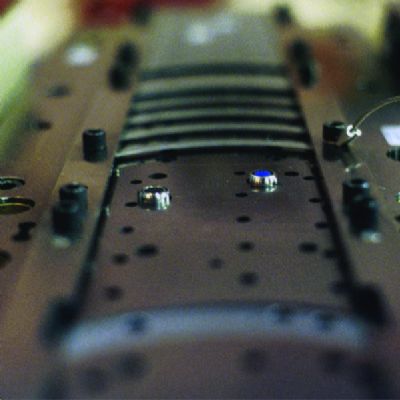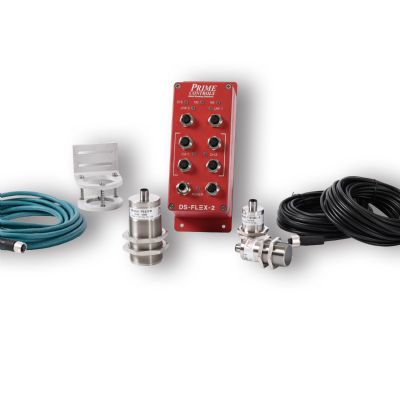“Direct-placement applications where robots use suction cups to pick blanks directly off of a stack for placement in dies are ideal for this technology,” says Vance. “There’s not much time to catch problems before the material enters the die, so it’s imperative to have double-blank detection or part sensing.”
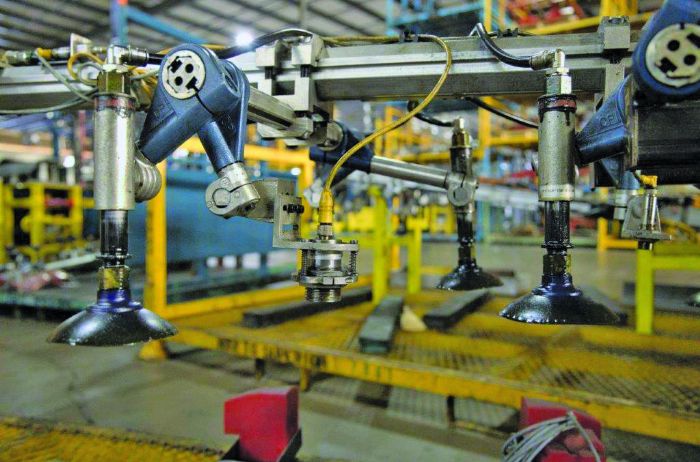 Increased use of cobots, or collaborative robots, prove highly compatible with this sensing as, Vance reports, weight of the detection mechanisms rarely prevents their use in cobot applications.
Increased use of cobots, or collaborative robots, prove highly compatible with this sensing as, Vance reports, weight of the detection mechanisms rarely prevents their use in cobot applications.
“Especially in automotive and appliance applications, we see elimination of human interaction in picking and placing parts into a die or onto a conveyer, which easily can be automated,” he explains. “Just the mundaneness of manual picking and placing can lead to double-picking or incorrect orientation of a part when placed manually into a die. Instead, metal formers can install a robot or cobot with EOAT, and sensor probes mounted inline with the suction cups or grippers.”
Integrates with EOAT
Integrators can help install these setups for robots and cobots, or the sensor provider can work with system and tool designers—as does Prime Controls—to design the sensors into the application.
“We can send 3D CAD files and other needed data to an integrator or the metal former that then designs and manufactures the EOAT with the needed sensing probes and brackets,” says Vance. “Using our spring-loaded compensation brackets, for example, when the suction cups contact the material, the sensing probe will be flush with the cups, and provide a bit of compensation as the suction cups actuate and pull the part.
“As soon as that EOAT lifts off of the part stack, within about 5 msec, the user will know that the part is present, and whether it is a single or double,” Vance continues, commenting on the speed of detection and notification. “And, some setups can denote if the material picked doesn’t match the thickness taught for that job. For instance, a metal former may have taught the control that the application must pick a 2-mm-thick piece of steel but instead it has picked a 1.5-mm-thick piece. The control will note and communicate the undersized material.”
Should such a situation occur, the sensing setup can be configured with an e-stop, or, in the case of a double-sheet detection, a robot can be taught to retry the pickup if cycle time allows.
“Here, the control would send the EOAT back down onto the stack, and perhaps that will break the double,” Vance explains. “If not, the robot can be taught to eject the problem part or double blank at a dump station, and then go back to pick another. Depending on cycle time and application speed, it’s nothing to teach the robot to perform such tasks, or even have the robot arm shimmy a bit to release a double. An integrator can teach such logic, telling the robot how to behave if it doesn’t have an acceptable part.”
Control and sensor providers offer various detection products depending on part material and thickness, and can work with metal formers and integrators to ensure the proper sensing capabilities for an application, according to Vance. In addition to the capability for such detection and response, notes Vance, comes the means to incorporate it all into full-line operations and control via ethernet IP options.
As for return on investment, just the ability to avoid costs and time for part, tool and equipment damage, and production delays—as noted at the beginning of this article—makes such sensing technology a sound investment, according to Vance.
“When you roll all of that together, we find that damage, lost production and quality issues run at least three to four times the cost of such setups,” he says, following with a simple conclusion. “This keeps the production line moving.” MF
View Glossary of Metalforming Terms
See also: Prime Controls, Inc.
Technologies: Sensing/Electronics/IOT
Comments
Must be logged in to post a comment. Sign in or Create an Account
There are no comments posted.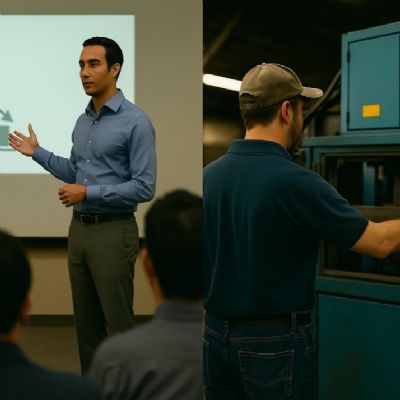 Sensing/Electronics/IOT
Sensing/Electronics/IOTEliminating Pressroom Waste—One Walk at a Time
Manuel Resendes June 10, 2025
Industry 4.0 Applications in the Sheet Metal Forming Industr...
Eren Billur March 27, 2025







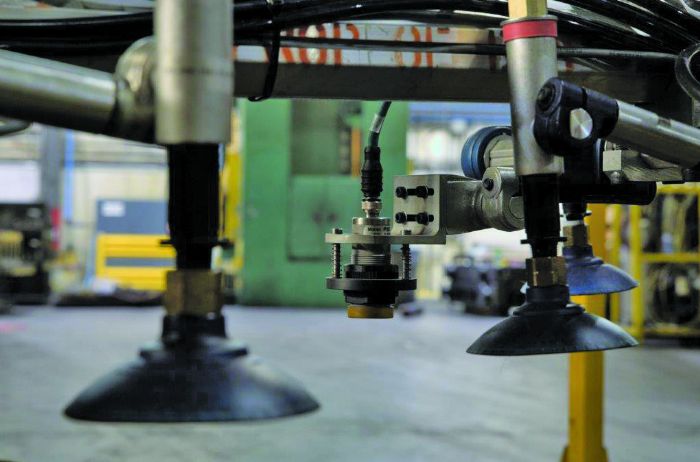 We reached out again to Vance, this time to discuss other methods of sensing for part presence and other conditions before part material even enters a press and tooling. His quotes above hold just as true here.
We reached out again to Vance, this time to discuss other methods of sensing for part presence and other conditions before part material even enters a press and tooling. His quotes above hold just as true here.